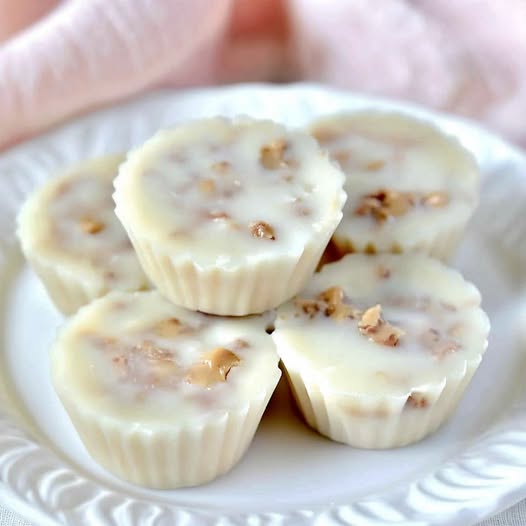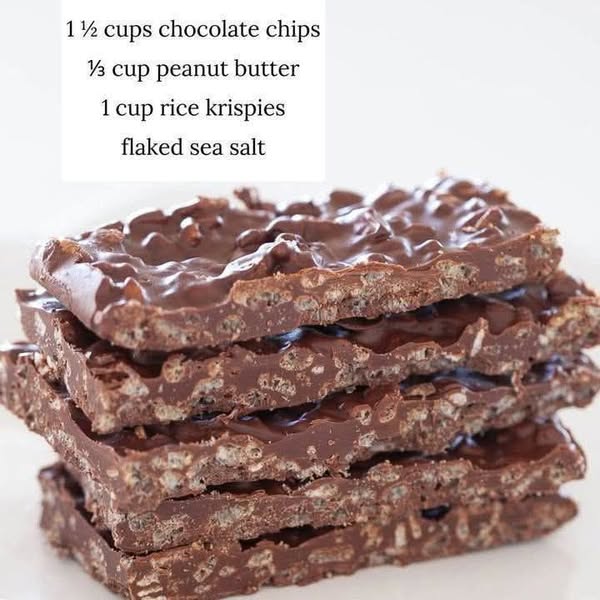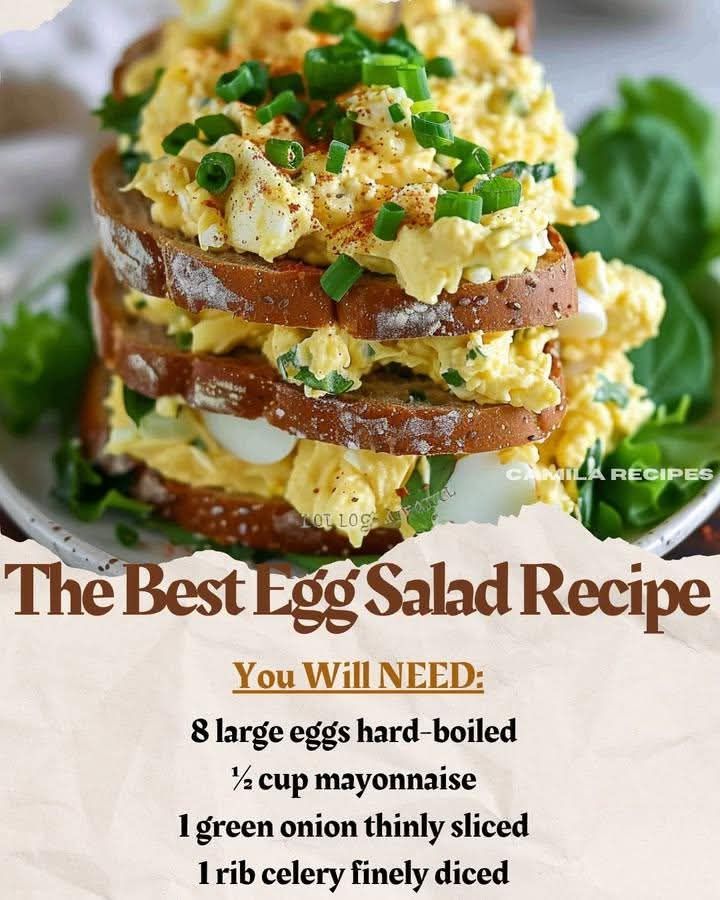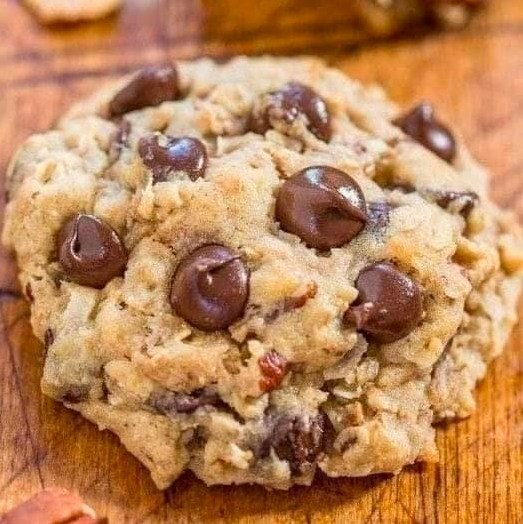
WW White Chocolate Peanut Butter Cups
Making these cute little chocolate-peanut butter cups is a breeze. You can actually produce thirty of them in thirty minutes. Simply use a food processor to purée the dry dates, peanut butter, water, agave nectar, cocoa powder, and salt, then transfer the mixture into cupcake liners. Use the microwave to melt the vegetable oil and white chocolate, then design them in any pattern you like. If you want to give guests the opportunity to decorate their own, they will enjoy it. In order to have the cups ready to go before you need them, you may also keep them in the fridge for a few hours.
ingredients
White chocolate can be used for two pounds of almond bark.
One cup of peanut butter, smooth
Two cups of salted peanuts, dry-roasted
Three cups of tiny marshmallows
Four cups of rice krispies
Directions
1. Melt white chocolate or almond bark.
2. If using a slow cooker, add the almond bark and heat it over low heat, stirring from time to time. It will take approximately one hour for this to fully break down.
3. For a speedier approach, use the microwave or stovetop process as directed on the almond bark/white chocolate package.
4. Once the white chocolate and almond bark have melted fully, whisk in the peanut butter until everything is blended and the white chocolate has a light tan appearance.
5. Put the marshmallows, rice krispies, and peanuts in a big bowl. Add the peanut butter chocolate and stir slowly. Spoon onto parchment paper and sit for at least two to three hours. By placing it in the freezer for 15 to 20 minutes, you can expedite the setting process.
6. Enjoy for up to two weeks after storing in an airtight container!
Remarks
It is not the goal of this recipe to be low in calories, sugar, fat, or WW points.
Nutrition
Health Information
1. Caloric Content:
White Chocolate Peanut Butter Cups from WW (previously Weight Watchers) are just one of several sweets made with calorie awareness in mind. People can enjoy a sweet treat without going over their daily calorie limit because each cup usually has less calories than traditional candy selections. But like with any delight, moderation is essential.
2. Nutritional Analysis:
Protein: Although peanut butter is a fantastic source of protein, the combination of peanut butter and chocolate in these cups probably results in a moderate amount.
Fat: White chocolate and peanut butter fats are present in these cups. Although peanut butter contains healthful fats, white chocolate may have more sugar and fat, increasing the total fat amount slightly.
Carbohydrates: White chocolate usually contains more sugar, which raises the amount of carbohydrates. This should be taken into account if you’re keeping an eye on your sugar intake.
Fiber: A small amount of fiber from peanut butter can aid with digestion and general feelings of fullness. These treats may not have a high total fiber content, nevertheless.
3. Ingredients to Look for:
These delicacies’ primary ingredients usually consist of:
Peanut butter: Offers a rich, creamy texture, protein, and good fats.
White Chocolate: Although white chocolate adds sweetness and a smooth finish, it’s vital to remember that it contains less antioxidants and more sugar than dark chocolate.
Sugar & Sweeteners: To reduce the total number of calories, some WW items may employ sugar alternatives or sweeteners with fewer calories. Make sure to read the label if you have a stevia or erythritol sensitivity.
4. Possible Nutritional Factors:
Gluten-Free: People with celiac disease or gluten sensitivity can use several WW products because they are gluten-free.
Allergies: People who are allergic to nuts should avoid these sweets as they may contain tree nuts or peanuts. Always look for any allergies on the packaging.
Low-Sugar or Sugar-Free Options: Seek out versions of the dessert that use sugar substitutes or have less sugar if you’re on a low-sugar diet or controlling your blood sugar levels.
Cooking Tips
Here are some pointers to remember when creating your own White Chocolate Peanut Butter Cups or other delicacies of a similar nature:
1. Select High-Quality Ingredients:
Peanut Butter: For a healthy choice, use natural peanut butter free of hydrogenated oils and added sugars. Before using natural peanut butter, give it a good stir because the oil may separate.
White Chocolate: Select premium white chocolate free of artificial flavors if you’re preparing your own. To counterbalance the sweetness, look for white chocolate chips with less sugar.
2. Balance the Sweetness:
A combination of white and dark chocolate can help reduce sugar intake because white chocolate can be very sweet. Dark chocolate has a balanced flavor profile since it contains fewer sugar and antioxidants.
3. Layering for the Ideal Texture:
Patience is the key to creating the ideal layers in peanut butter cups. Pour a small layer of melted white chocolate into your molds first. Put the peanut butter mixture on top, then another coating of chocolate, and finally freeze this layer for a few minutes to solidify.
5. Refrigeration is Key:
Once the cups are assembled, place them in the refrigerator for at least half an hour or until they are completely set. This guarantees the cups’ cohesiveness and their firm, bite-sized consistency.
6. Portion Control:
Try cutting larger cups in half or quarters or creating smaller ones to keep a healthier balance. You may still enjoy the treat and manage your servings thanks to this.
Conclusion
WW White Chocolate Peanut Butter Cups provide a delicious, decadent snack that is lower in calories than conventional candy, making it simpler to sate your sweet desire without sacrificing your health objectives. You may indulge in peanut butter and white chocolate flavors without significantly altering your diet by emphasizing high-quality ingredients and sensible portion sizes.
When creating your own version, keep in mind that texture and sweetness must be balanced. You can make a decadent treat that still fits with your health goals by using healthier substitutes like natural peanut butter and cutting back on the chocolate’s sugar content. When consumed in moderation, these cups—whether homemade or purchased from a store—can be a delightful and fulfilling indulgence that complements a healthy lifestyle.






